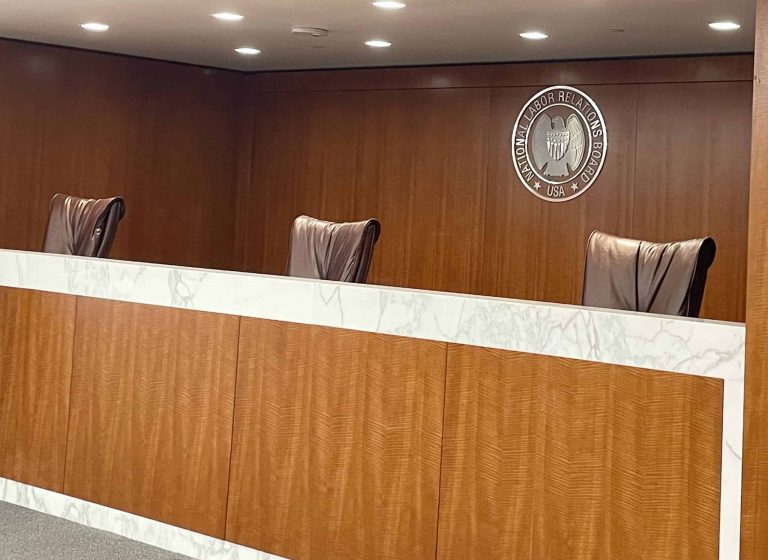Aubrey Sparks is a student at Harvard Law School.
In October of 1977, a group of attorneys walked out of the Supreme Court building, having extended a new constitutional right to millions of people. They, however, were not in Washington, DC, but instead were leaving Albany, having argued a case arising from the provisions of the New York State Constitution.
State constitutional litigation is widely considered undervalued and underused, overshadowed by federal constitutional law. Today, with the rise of progressive new federalism, state constitutional law again stands on a precipice; increased attended to the power of state courts to secure rights not granted by the federal constitution makes state constitutional litigation a powerful tool. States courts can be reticent to interpret their state constitutions differently than the federal constitution, and may be faced with issues of preemption when creating state constitutional rights without a federal constitutional analog.
Looking to the foundational issue of preemption, many state laws concerning labor and employment are preempted by federal law. State constitutional law would be not be useful to supplement or improve upon federal laws such as the National Labor Relations Act, which has strong preemption language. However, states still have the ability to regulate and legislate many aspects of the workplace which are profoundly important to workers; states are able to control minimum wage, hours, and the at-will employment relationship, among others.
Even though there are considerations to be made when pursuing state constitutional law claims, many landmark court decisions in recent years have hinged on rights granted by state constitutions. They have been used to legalize marriage equality, change how congressional districts are drawn and how schools are funded, and have guaranteed a right to welfare. Given these recent developments, state constitutional litigation is increasingly relevant to workers and those interested in workers’ rights. Litigators, labor organizations, community groups, and activists are presented with an opportunity to leverage these constitutions to support workers, which gives rise to questions about how state constitutional law can be used to protect workers.
There are two primary ways that state constitutions protect workers: through provisions which explicitly aim to regulate labor and employment, and broad guarantees of general rights which can be applied within the context of labor. Explicit state constitutional protections cover a wide range of issues including right to work, regulation of pay and hours, and the relationships between employees and employers. While some of these protections mirror the mandates of federal law, such as Florida’s minimum wage provision, others reject interpretations that are tied to the federal constitution.
These protections are specific, finite, and have been shown to be an effective way to protect the rights of workers. However, significant questions remain about whether passing these policy reforms through state constitutional amendment is more effective than achieving the same policy goals through legislation. However, state constitutions may be particularly well-suited for the promulgation of broader, more value-driven rights for workers. State constitutions are more difficult to amend than state statutes, which allows states to offer some level of protection to rights which they believe are particularly important. Additionally, a broad right granted in a constitution gives state courts more flexibility and accountability in their interpretation than an inflexible statutory regime might otherwise. Finally, state constitutions are an expression of publicly held values in a way that could plausibly affect the behavior of actors within the state.
Alaska’s constitution declares that “all persons have a natural right to the enjoyment of the rewards of their own industry,” an issue that was litigated in Cogan v. Department of Revenue. In that case, the court determined that the rights granted in Article I §1 of Alaska’s constitution did not exempt workers from their obligations to pay state taxes, as that same provision declares that “all persons have corresponding obligations to the people and to the state.” The court, however, did not hold that the rights conferred by the state constitution were merely oratory or that they did not convey substantive rights. These rights have been used to hold that public employment must be based on merit and that compensation is required for the taking of private property for public uses. This unique and broad right could be a valuable tool for workers in Alaska, and additional litigation on this topic could push the state’s courts to determine the limits of what it means for a worker to have a natural right to the enjoyment of the rewards of their industry.
Another example of a broad state constitutional right which could be valuable to workers can be found in Article X §24 of Florida’s constitution, which stipulates that “all working Floridians are entitled to be paid a minimum wage that is sufficient to provide a decent and healthy life for them and their families, that protects their employers from unfair low-wage competition, and that does not force them to rely on taxpayer-funded public services in order to avoid economic hardship.” While this amendment has had little litigation surrounding it, prior decisions have held that Article X §24 confers substantive rights that can be unlawfully violated. This constitutional provision could potentially be valuable to establish rights for disabled workers throughout the state being paid minimum wage, for incarcerated individuals forced to work for the state, or workers who are getting paid less than minimum wage, as permitted by FLSA. A concentrated effort on the part of progressive litigators to determine the reach of this constitutional protection could help expand the rights of workers throughout the state.
Workers and activists can further maximize the value of state constitutions by amending constitutions to include provisions that protect and empower workers. Mechanisms to amend state constitutions vary, and also differ in how difficult they are to navigate successfully. These methods often embrace direct democracy, more so than traditional legislative processes. This could make it possible for widely-supported amendments to be successful even in communities in which partisan divide might otherwise stifle legislation supporting workers’ rights. Finally, most state judges are elected, offering an additional level of democratic accountability to the interpretation of state constitutional protections.
This strategy of using state constitutional protections to supplement federal protections for workers may, at first glance, appear more difficult in conservative regions of the nation. However, unlike the passage of new legislation, many of these protections are already enshrined within state constitutions and, like in Florida or Alaska, have been held to confer substantive rights. While this approach will not be a panacea for all the injustice workers face on the job, it’s important to recognize that even in conservative states where it may be difficult to pass new worker-friendly legislation, there are valuable tools for workers sitting untouched in constitutions across the country.
These are examples of how a robust embrace of new federalism and an increased reliance on both the explicit and abstract rights granted by state constitutions can be used to confer expanded rights to workers. These unique rights, and the unique state histories and cultures that gave rise to them, allow states to function as “laboratories of innovation” and come up with creative, and potentially powerful, rights for workers.









Daily News & Commentary
Start your day with our roundup of the latest labor developments. See all
July 13
APWU and USPS ratify a new contract, ICE barred from racial profiling in Los Angeles, and the fight continues over the dismantling of NIOSH
July 11
Regional director orders election without Board quorum; 9th Circuit pauses injunction on Executive Order; Driverless car legislation in Massachusetts
July 10
Wisconsin Supreme Court holds UW Health nurses are not covered by Wisconsin’s Labor Peace Act; a district judge denies the request to stay an injunction pending appeal; the NFLPA appeals an arbitration decision.
July 9
the Supreme Court allows Trump to proceed with mass firings; Secretary of Agriculture suggests Medicaid recipients replace deported migrant farmworkers; DHS ends TPS for Nicaragua and Honduras
July 8
In today’s news and commentary, Apple wins at the Fifth Circuit against the NLRB, Florida enacts a noncompete-friendly law, and complications with the No Tax on Tips in the Big Beautiful Bill. Apple won an appeal overturning a National Labor Relations Board (NLRB) decision that the company violated labor law by coercively questioning an employee […]
July 7
LA economy deals with fallout from ICE raids; a new appeal challenges the NCAA antitrust settlement; and the EPA places dissenting employees on leave.